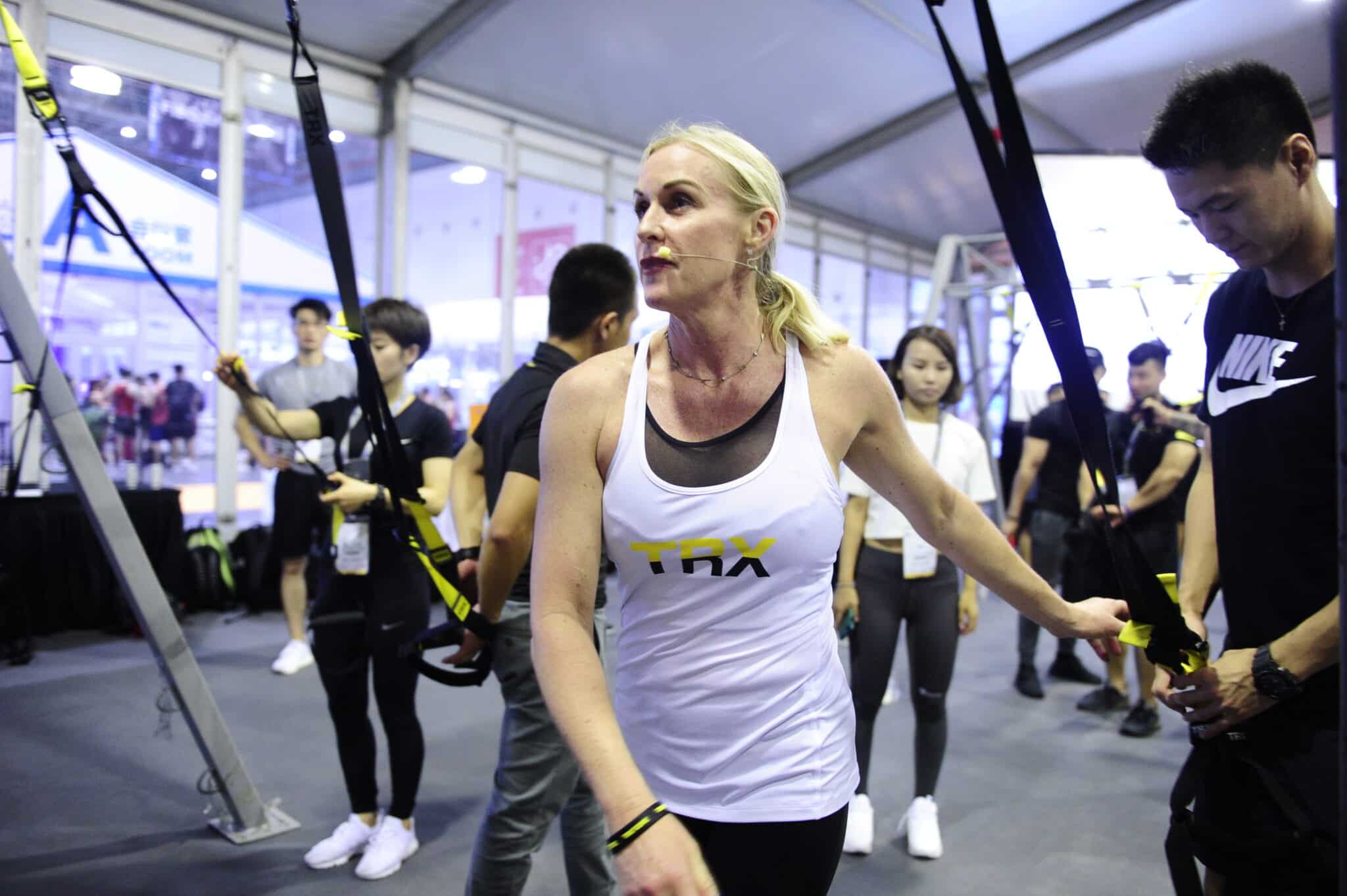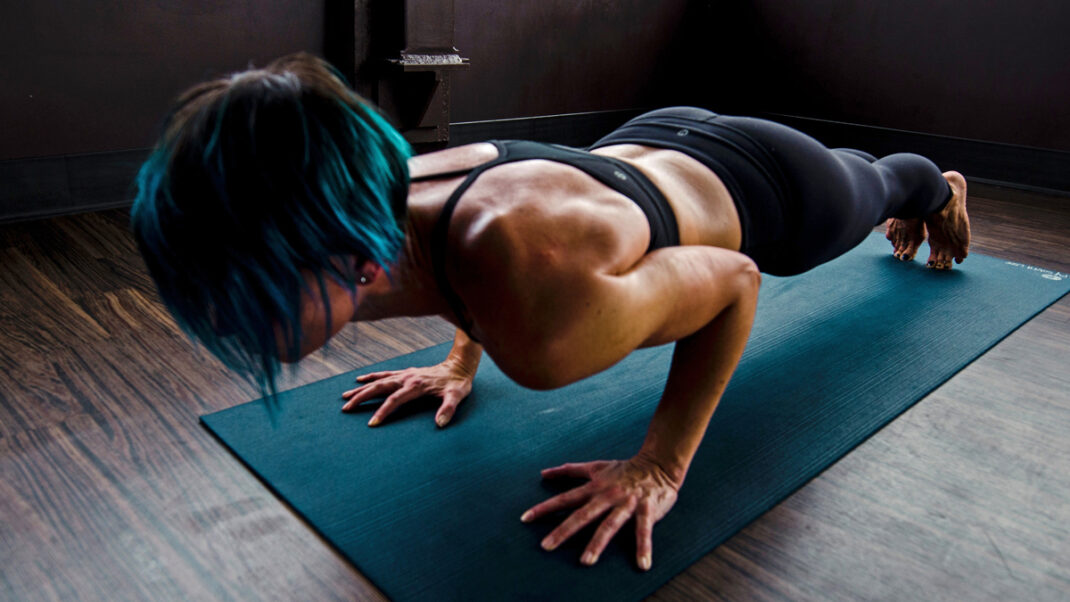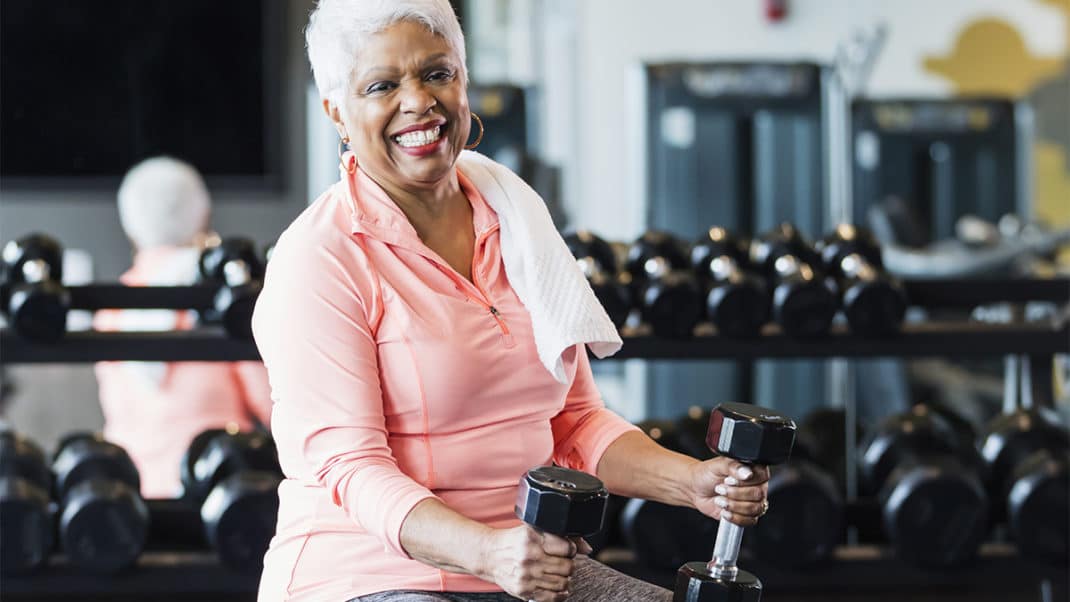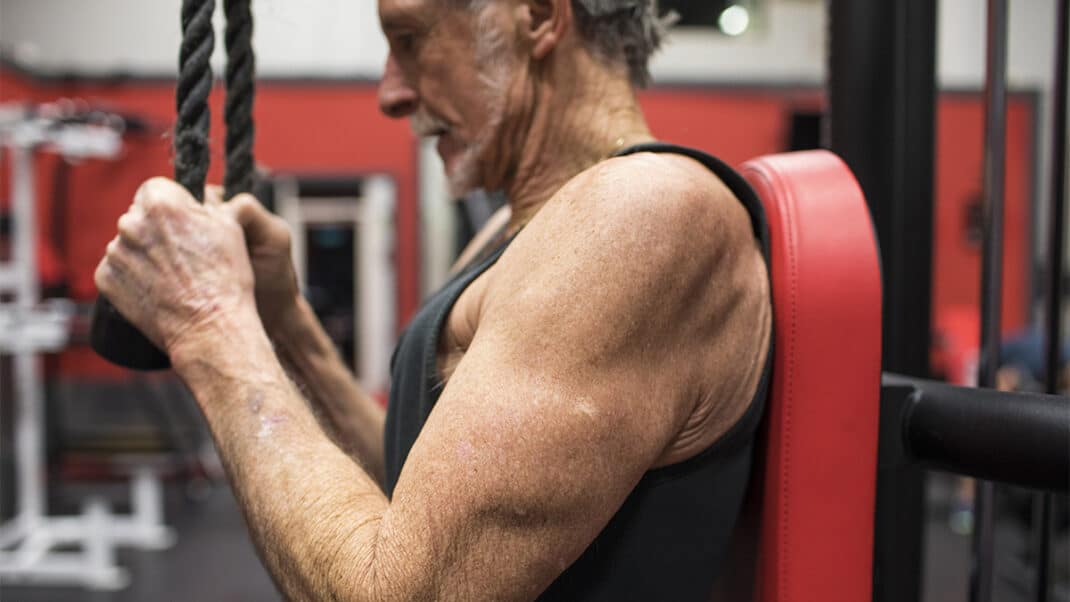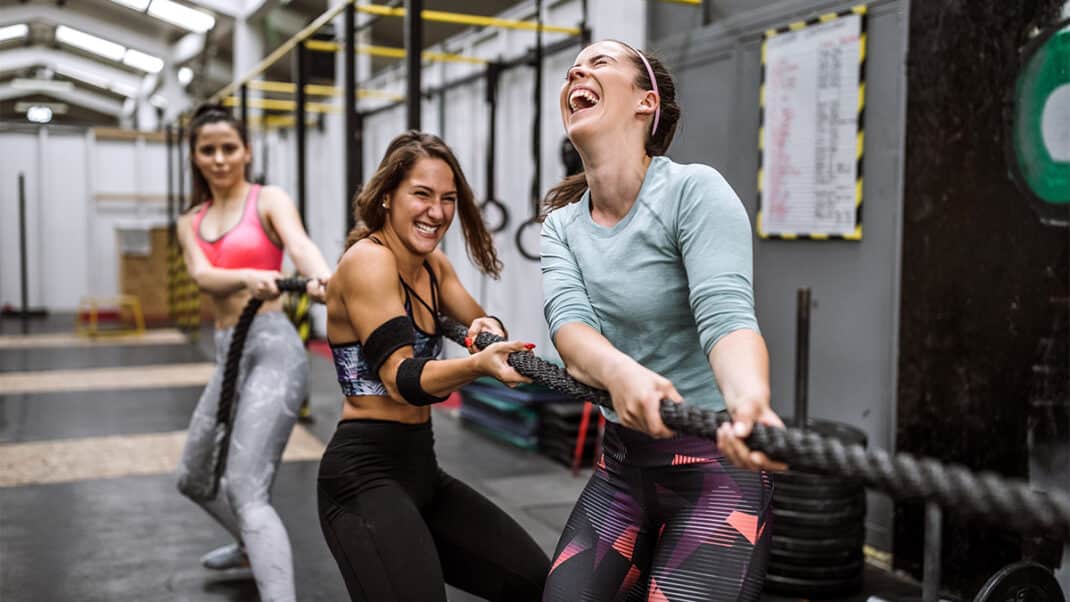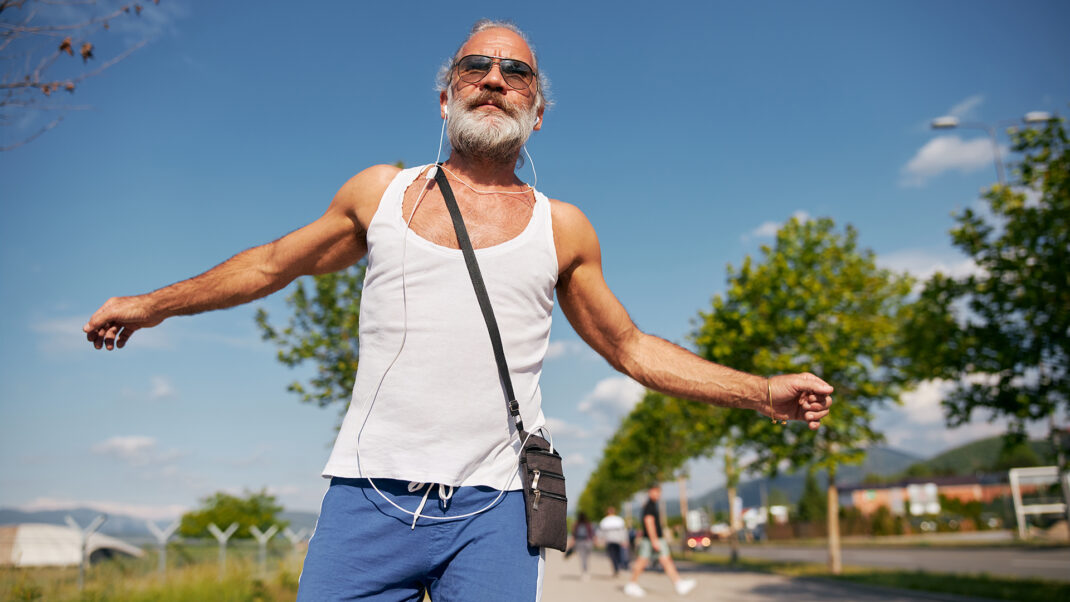No-Equipment Outdoor Workouts
Switch up your indoor classes and inspire your participants to enjoy the sunshine and fresh air.

It’s that time of year when springtime reinvigorates clients and participants, coaxing them to come out of hibernation and play. Why not leave the fluorescent lights behind and take class outside? Parks, fields, even parking lots are great places to lead outdoor workouts. There are options for everyone—and you don’t have to lug around a bunch of equipment, either. Maximize your time and space by incorporating simple, effective body-weight exercises that improve strength, speed, power and flexibility.
Take the Initiative
For those who live in consistently warm and relatively dry communities, taking classes outside is nearly a year-round option. In other parts of the country, late spring, summer and early fall are ideal for scheduling outdoor fitness classes. Work with your program director to find community-based outdoor locations, including local parks and recreation areas. A bonus: You will expose facility members to outdoor fun and fitness options for the entire family.
Check out your parks and recreation website or look for open spaces that offer a place for safe movement. Scout and explore the area before you take your class on location. Check for paved or gravel pathways, stairs, benches, playground equipment, courts, fields, curbs, walls, and fences. Ensure you have the legal right to be on that site. Some communities require a permit to hold fitness classes in parks and public spaces, so check with your local municipality and be sure you understand the rules and guidelines. Additionally, make certain that your liability insurance is up to date and that it covers workouts and exercise classes outside of the fitness studio location.
See also: 6 Reasons Why Nature May Be the Best Gym
No-Equipment Outdoor Workout Guidelines

Take your fitness classes outside for a no-equipment.
Although this workout requires no equipment, having a few items on hand will make it easier for participants to understand the expectations and follow along with minimal confusion. These tools will also help you, the coach, to stay focused, on task and in control of the group.
Colored cones are useful for marking off a work area. Inexpensive and portable, they can indicate movement boundaries. A stopwatch allows for accurate drill timing, and a whistle is handy for signaling exercise switches, start and stop expectations for cardio drills, and class duration.
Movement Terms
To help attendees grasp what’s expected of them, use consistent terminology for drills and exercises.
BASIC DRILLS
- Movements are easy to follow.
- Each participant performs them at his or her own pace within the time frame.
- The exercises can be partner-based, team-based or performed individually.
PACER-PARTNER CHALLENGES
- One person is the “pacer” and the other the “partner.”
- The pacer sets the timing for the movement block.
- The partner keeps going until the pacer has completed the assigned activity, and then they switch places.
- Both partner and pacer keep moving through the assigned drills. The pacer takes the lead (sets the pace) on the switches until time is called.
GROUP CHALLENGES
- Everyone is tasked with the same activity.
- The challenges are timed.
- The bouts are typically short bursts of high-intensity activities.
See also: Green Exercise: How It Benefits You
No-Equipment Outdoor Workout Sampler
Refer to the following examples to create safe, effective and consistent fitness experiences in the outdoor environment. This format is easy to replicate and can be adjusted based on participants’ needs and the space available.
WARMUP (5–10 MINUTES)
Form lines and perform these drills in 30- to 60-second intervals:
- high knees, walking
- high knees, jogging
- front crawl
- lateral shuffle (R and L)
- quadruped bird dog
- forearm plank
ROUND ONE: BASIC DRILL (5 MINUTES)
- Power walk, jog or run on walking trail or path (use cones to mark start and end points or to create a “track” if there isn’t one).
- Perform squat jack 10x and lateral skater 20x.
- Goal: 2 rounds. Continue to work, repeating all drills until time is called.
ROUND TWO: PACER–PARTNER CHALLENGE (5 MINUTES)
Pacer
- Do forearm side-plank leg lift 10x each side.
- Perform body-weight bridge 20x.
Partner
- Do burpees (vertical jump and pushup are optional) (pacer sets time).
- Goal: 2 rounds.
The pacer completes all reps and then switches with the partner when complete. Pacer and partner continue to switch until time is called.
ROUND THREE: PACER–PARTNER CHALLENGE (10 MINUTES)
Pacer
- Do walking lunges to cone, then back again.
Partner
- Perform jumping jack 20x, situp 10x and pushup 5x.
- Goal: 2 rounds.
The pacer completes the entire distance and then switches with the partner when complete. Pacer and partner continue to switch until time is called.
ROUND FOUR: GROUP CHALLENGE (3 MINUTES)
Do plank jack 50x and frogger (deep squat jump with fingertips touching ground between jumps) 50x. Anyone who finishes before time is called is rewarded with extra rest and encouraged to cheer on the others as they complete the challenge.
COOLDOWN (5 MINUTES)
Lead participants to a grassy area or another clean, flat space for static stretches and closing remarks. This is a great opportunity to share postworkout best practices. For example, talk about the importance of hydration or active recovery. Introduce participants to one another and remind them of when the next class will take place. Offer information about registration, the cancellation policy, or ways to reach you with questions or concerns.
See also: Mother Nature’s Gym
Outdoor Coaching Success
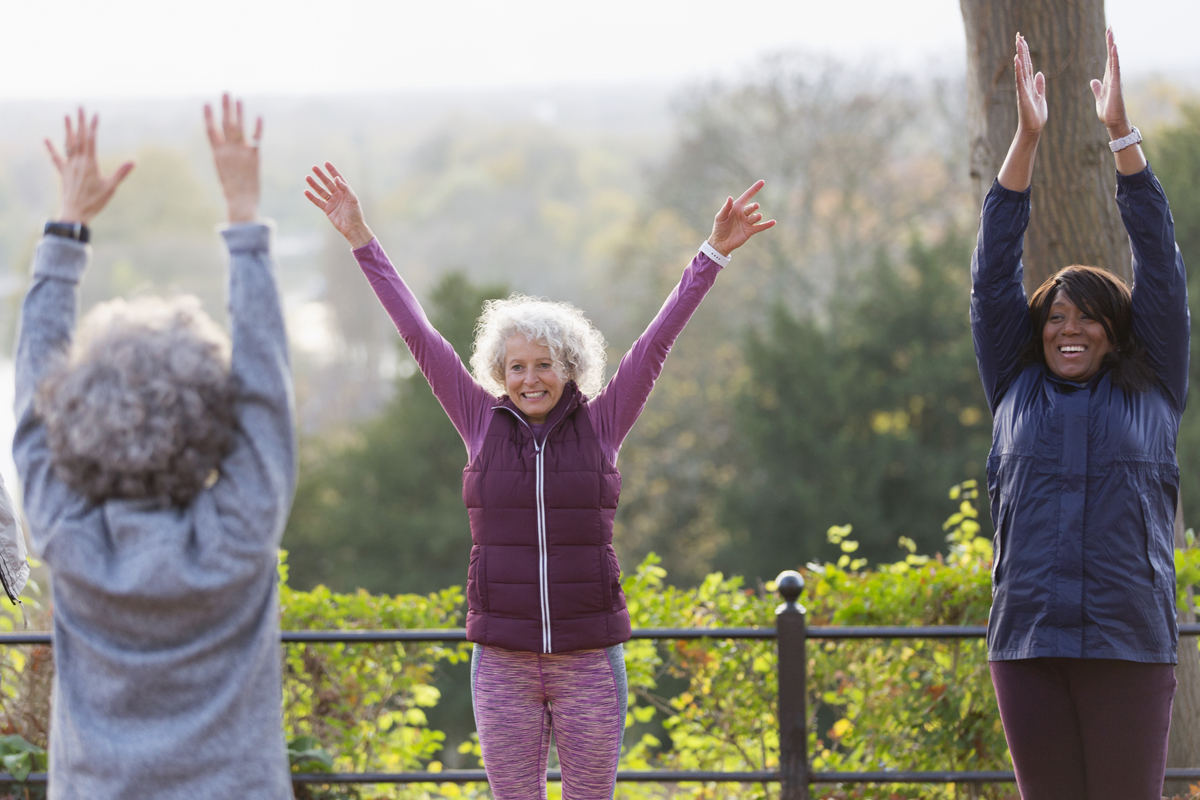
Implement best practices and coaching in your outdoor classes.
Even though an outside class may be more casual than an indoor workout, you still want to implement best practices as a fitness professional. In community-based formats, you’ll see a wide range of fitness levels, and some individuals may have limited experience with exercise. Be approachable and empathetic and offer progressions and regressions for each movement. Be aware of outdoor temperatures and weather conditions and ask participants to bring water. Advise wearing layered clothing and footwear that will ensure performance, safety and success.
Sharing Fitness Opportunities
Outdoor classes are a great way to give back to your community, so you might consider offering free classes to “give back” the gift of fitness. Not only will you be teaching high-quality workouts, but you’ll show the community the potential to exercise in spaces they can easily access but may not have realized were available. Fee-free classes are a great way to meet prospective clients and members, showcase your talents and get some exposure.
Get the Word Out
Allow yourself significant lead time to advertise your outdoor offerings. Here are some ideas:
- Post fliers on social media and community bulletin boards and in salons, spas, and natural food or traditional grocery stores, or leave copies of your class schedule in as many of these places as possible.
- Partner with local businesses or activity clubs (e.g., a running or rowing club). Your selling point: You’re providing outdoor experiences that will complement their patrons’ current training schedules and performance goals.
- If you intend to advertise in a brochure or catalog, keep in mind that for spring/summer offerings, you’ll typically need to provide program information as much as 6 months in advance. Plan accordingly.
- Use a referral system and incentivize participants to bring a friend or family member.
- Set up a schedule and commit to it.
- Create a refund and no-show policy. Include a cancellation policy regarding weather or inclement conditions and a way to inform participants of changes to the schedule. Include the date and time of makeup classes.
Irene McCormick, MS
"Irene McCormick, MS, is the 2018 IDEA Instructor of the Year and the senior director of fitness education for Orangetheory Fitness® in Boca Raton, Florida. Former adjunct faculty at Drake University, Irene is a master course instructor for TRX®, a lead conference educator for WaterRower®, a Savvier Fitness master trainer, a Ryka® brand ambassador and an award-winning conference educator. She has also written two books, and is a subject matter expert for ACE, NASM, Human Kinetics and Orangetheory."
